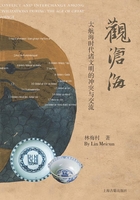
Abstract
Historically China has been a state categorized by agrarian culture. Although China has a coastline of more than 18,000 kilometers, resources from the sea were never fully taken advantage of due to the traditional ideas of pro-agriculturalism and anti-commercialism. In the second century B.C.E., Zhang Qian (164—114 B.C.E.) opened up a route to the West that was later designated as the Silk Road.Before the Ming dynasty, the Silk Road was the route for China to communicate with the West, mainly through Sodgian merchants as the middlemen. It was not until the time of Great Voyage that China started direct economic and cultural interactions with Europe. At that time, Portugal, Spain, and the Dutch in succession played important roles in maritime trade. Even though Ming China imposed a policy to ban all maritime shipping, it did not prevent smuggling of Jingdezhen blue-and-white porcelain and Longquan celadon into the Islamic world. It was the Muslim merchants in the southeastern coast of China who mostly challenged the trade-and-tributary system of the Ming dynasty. They were not only actively involved in the design and production of blue-and-white porcelain in Jingdezhen during the Ming dynasty but also had certain influence over the royal porcelain style during the Zhengde era of the Ming (1506—1521 C.E.). In the early 17th century, Zheng Zhilong (also known as Nicholas Iquan Gaspard) became the most powerful pirate in the Taiwan Strait area. He decided to join the Ming Navy in 1628 but still remained highly independent. In 1633 he defeated an alliance of Dutch vessels in the Battle of Liaoluo Bay. As a result, he built his maritime empire centered at Beigang in Taiwan. During his peak, Zheng owned more ships conducting trade with Nagasaki than the Dutch did. He dealt with merchants from Portugal, Spain, Britain, Japan, and the Dutch, becoming one of the richest men at that time. Unfortunately the Qing dynasty did not take advantage of this maritime foundation built by Zheng Zhilong and his son Zheng Chenggong. China thus lost its last chance to compete with other countries for maritime supremacy.
To quote a famous line from Cao Cao (155—220 C.E.): “I come to the stony hill on the east, to view the wild blue sea.” By taking part of this quote as the title of this book, I discuss questions pertaining to the con fl ict and interactions among Ming China, Catholicism of the West and Islam of the Middle East during the Age of Great Voyage. For instance, I will inquire in this book the fi rst landing place of the Portuguese, historically named Tamão Island. Where is the center for global trade in the 16th century, historically named Liampo port? How was the porcelain of Jingdezhen shipped to Europe, and what kind of impact Chinese porcelain had on the 16—17 century Europe? Based on, but not limited by, archaeological discoveries, this book fully examines the economic and cultural communications between China and the other civilizations during the Age of Great Voyage.